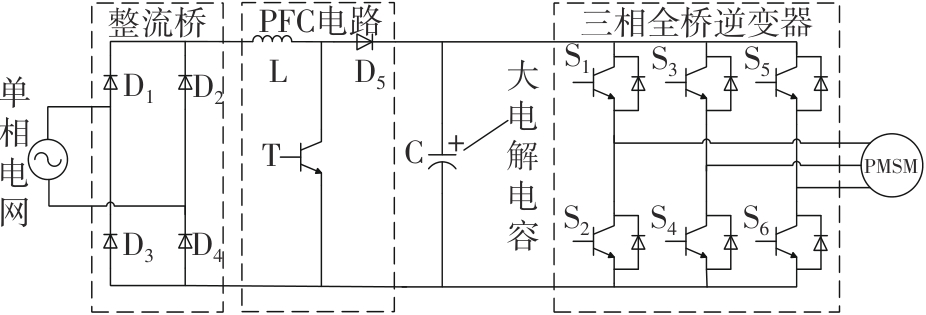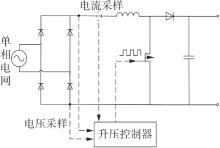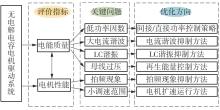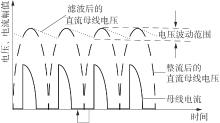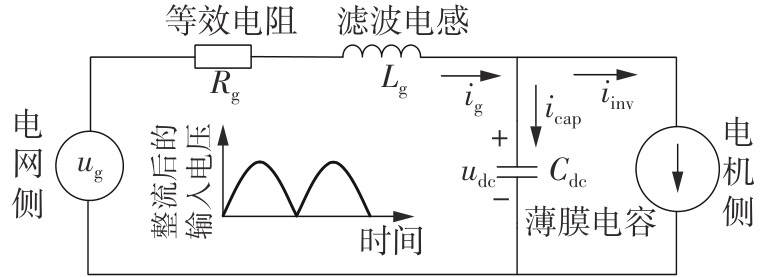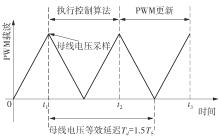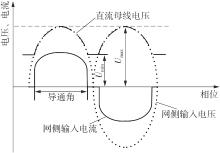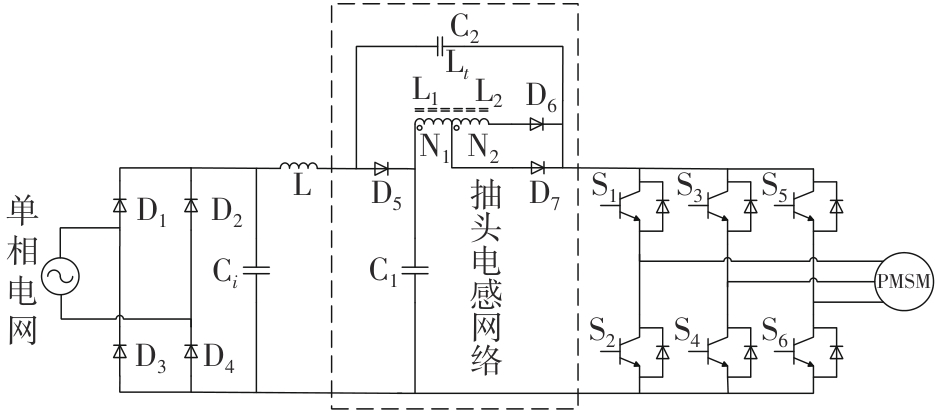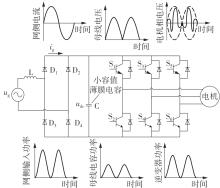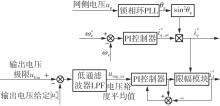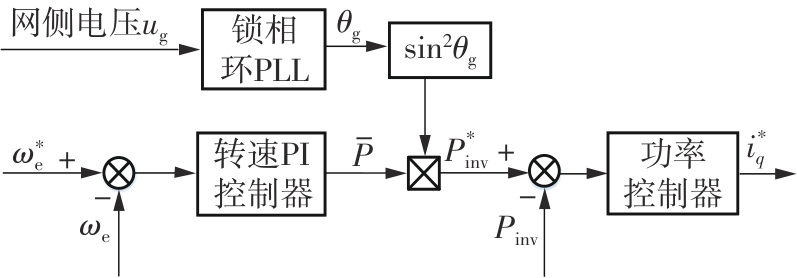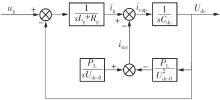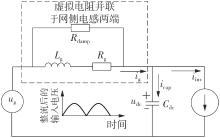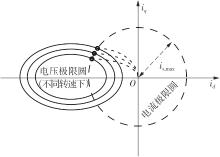Journal of South China University of Technology(Natural Science Edition) ›› 2024, Vol. 52 ›› Issue (12): 93-108.doi: 10.12141/j.issn.1000-565X.240274
Special Issue: 2024年流体动力与机电控制工程
• Fluid Power & Mechatronic Control Engineering • Previous Articles Next Articles
Review of Driving Technology for Permanent Magnet Synchronous Motors Without Electrolytic Capacitor
WANG Xiaohong1( ), LIANG Yu1, PAN Zhifeng2(
), LIANG Yu1, PAN Zhifeng2( ), LU Mingqing1, LIU Manxi1
), LU Mingqing1, LIU Manxi1
- 1.School of Automation Science and Engineering,South China University of Technology,Guangzhou 510640,Guangdong,China
2.School of Automation,Guangdong Polytechnic Normal University,Guangzhou 510450,Guangdong,China
-
Received:2024-05-31Online:2024-12-25Published:2024-07-23 -
Contact:PAN Zhifeng E-mail:xhwang@scut.edu.cn;p.zhifeng@gpnu.edu.cn -
Supported by:the National Natural Science Foundation of China(62173150);the Key Program of Basic and Applied Basic Research Foundation of Guangdong Province(2022B1515120003)
CLC Number:
Cite this article
WANG Xiaohong, LIANG Yu, PAN Zhifeng, LU Mingqing, LIU Manxi. Review of Driving Technology for Permanent Magnet Synchronous Motors Without Electrolytic Capacitor[J]. Journal of South China University of Technology(Natural Science Edition), 2024, 52(12): 93-108.
share this article
| 1 | 中华人民共和国国民经济和社会发展第十四个五年规划和2035年远景目标纲要[N].人民日报,2021-03-13(001). |
| 2 | 阚超豪,鲍习昌,王雪帆,等 .无刷双馈电机的研究现状与最新进展[J].中国电机工程学报,2018,38(13):3939-3959,4036. |
| KAN Chaohao, BAO Xichang, WANG Xuefan,et al .Overview and recent developments of brushless doubly-fed machines[J].Proceedings of the CSEE,2018,38(13):3939-3959,4036. | |
| 3 | SHIN H, CHAE Y,SON Y,et al .Single-phase grid-connected motor drive system with DC-link shunt compensator and small DC-link capacitor[J].IEEE Tran-sactions on Power Electronics,2017,32(2):1268-1278. |
| 4 | 范军,孙宏昌,林静,等 .永磁同步电机在工业领域的节能技术研究[J].工业安全与环保,2023,49(S1):46-49. |
| FAN Jun, SUN Hongchang, LIN Jing,et al .Research on energy-saving technology of PMSM motors in industrial field[J].Industrial Safety and Environmental Protection,2023,49(S1):46-49. | |
| 5 | 易星,李文祥,吴跃杰 .“双碳”背景下轮毂电机式电动汽车发展现状及对策研究[J].科技与创新,2023(16):29-31. |
| YI Xing, LI Wenxiang, WU Yuejie .Research on the development status and countermeasures of in-wheel motor electric vehicles under the background of “double carbon”[J].Science and Technology & Innovation,2023(16):29-31. | |
| 6 | 莫会成,闵琳 .现代高性能永磁交流伺服系统综述——传感装置与技术篇[J].电工技术学报,2015,30(6):10-21. |
| MO Huicheng, MIN Lin .Summary of modern high performance permanent magnet AC servo system—sensor device and technology[J].Transactions of China Electrotechnical Society,2015,30(6):10-21. | |
| 7 | 张超,胡鑫,朱孝勇,等 .基于预测控制的无电解电容功率变换器电机驱动系统[J].电工技术学报,2018,33(24):5649-5658. |
| ZHANG Chao, HU Xin, ZHU Xiaoyong,et al .Electrolytic capacitor-less motor drive system based on predictive control[J].Transactions of China Electrotechnical Society,2018,33(24):5649-5658. | |
| 8 | Electromagnetic compatibility,Part 3,Section 2.Limits for harmonic current emissions (equipment input current≤16 A per phase): [S]. |
| 9 | HUO J, ZHAO N, WANG G,et al .An active damping control method for reduced DC-link capacitance PMSM drives with low line inductance[J].IEEE Transactions on Power Electronics,2022,37(12):14328-14342. |
| 10 | BAO D, PAN X, WANG Y .A novel hybrid control method for single-phase-input variable frequency speed control system with a small DC-link capacitor[J].IEEE Transactions on Power Electronics,2019,34(9):9016-9032. |
| 11 | 闫文斌,陈强,史绪龙,等 .三相不可控整流桥的故障检测[J].装备制造技术,2023(5):275-277,286. |
| YAN Wenbin, CHEN Qiang, SHI Xulong,et al .Fault detection of three-phase uncontrollable rectifier bridge[J].Equipment Manufacturing Technology,2023(5):275-277,286. | |
| 12 | PAN Z, WANG X, GUAN Q,et al .Adaptive current harmonics suppression strategy for grid-tie inverters[J].ISA Transactions,2022,128:698-710. |
| 13 | MATHE L, TOROK L, WANG D,et al .Resonance reduction for AC drives with small capacitance in the DC link[J].IEEE Transactions on Industry Applications,2017,53(4):3814-3820. |
| 14 | FAN B, WANG K, WHEELER P,et al .A branch current reallocation based energy balancing strategy for the modular multilevel matrix converter operating around equal frequency[J].IEEE Transactions on Power Electronics,2018,33(2):1105-1117. |
| 15 | SAKURAI T, HAGA H .High-efficiency control of electrolytic capacitor-less dual-inverter by reactive power compensation in High-speed region[C]∥Proceedings of 2023 IEEE Energy Conversion Congress and Exposition.Nashville:IEEE,2023:5277-5283. |
| 16 | 周玉斐,黄文新,赵健伍 .单相交流输入的无电解电容抽头电感单级升压逆变器在交流调速系统中的应用[J].中国电机工程学报,2014,34(12):1836-1843. |
| ZHOU Yufei, HUANG Wenxin, ZHAO Jianwu .An adjustable-speed system with single-phase AC input based on electrolytic capacitor-less tapped-inductor single-stage boost inverters[J].Proceedings of the CSEE,2014,34(12):1836-1843. | |
| 17 | ZHOU Y, HUANG W, HONG F .Single-phase input variable-speed AC motor system based on an electrolytic capacitor-less single-stage boost three-phase inverter[J].IEEE Transactions on Power Electronics,2016,31(10):7043-7052. |
| 18 | 于仲安,葛庭宇,梁建伟 .高功率因数的无刷直流电机驱动器设计[J].制造业自动化,2019,41(4):91-95,105. |
| YU Zhong-an, GE Ting-yu, LIANG Jian-wei .Design of high power factor brushless DC moter[J].Manufacturing Automation,2019,41(4):91-95,105. | |
| 19 | LU Y, ZHOU B, ZHANG Y,et al .Doubly salient electromagnetic motor-drive system with small DC-link capacitance[J].IEEE Transactions on Industrial Electronics,2024,71(8):9373-9382. |
| 20 | XIA C, LI P, LI X,et al .Series IGBT chopping strategy to reduce DC-link capacitance for brushless DC motor drive system[J].IEEE Journal of Emerging and Selected Topics in Power Electronics,2017,5(3):1192-1204. |
| 21 | 张超,胡鑫,朱孝勇,等 .基于微升压功率解耦电路的无电解电容驱动系统研究[J].电工技术学报,2019,34(16):3322-3332. |
| ZHANG Chao, HU Xin, ZHU Xiaoyong,et al .Research on electrolytic capacitor-less motor drive system based on tiny boost converter[J].Transactions of China Electrotechnical Society,2019,34(16):3322-3332. | |
| 22 | ZHANG C, XU L, ZHU X,et al .Elimination of DC-link voltage ripple in PMSM drives with a DC-split-capacitor converter[J].IEEE Transactions on Power Electronics,2020,36(7):8141-8154. |
| 23 | 张超,徐磊,朱孝勇,等 .基于虚拟直流母线结构的轴向磁场永磁电机小电容驱动系统[J].中国电机工程学报,2021,41(20):7141-7152. |
| ZHANG Chao, XU Lei, ZHU Xiaoyong .Small-capacitor drive system of axial flux PM Motor based on virtual DC bus structure[J].Proceedings of the CSEE,2021,41(20):7141-7152. | |
| 24 | JUNG H S, CHEE S J, SUL S K,et al .Control of three-phase inverter for AC motor drive with small DC-link capacitor fed by single-phase AC source[J].IEEE Transactions on Industry Applications,2014,50(2):1074-1081. |
| 25 | 尹泉,吴根平,罗慧,等 .无电解电容逆变器永磁同步电机驱动系统控制研究[J].电气传动,2015,45(7):3-6. |
| YIN Quan, WU Gen-ping, LUO Hui,et al .Control of inverter without electrolytic capacitor for permanent magnet synchronous motor drive[J].Electric Drive,2015,45(7):3-6. | |
| 26 | 蒋凯文,金海,许参 .一种高功率因数无电解电容PMSM的设计与仿真[J].电子科技,2021,34(12):13-18. |
| JIANG Kaiwen, JIN Hai, XU Shen .Design and simulation of high power factor PMSM without electrolytic capacitor[J].Electronic Science and Technology,2021,34(12):13-18. | |
| 27 | 张贝贝,何维祥,张恒伟,等 .无电解电容三相永磁同步电机驱动系统控制策略研究[J].微电机,2023,56(11):55-59. |
| ZHANG Beibei, HE Weixiang, ZHANG Hengwei,et al .Control strategy of electrolytic capacitor-less three phase permanent magnet synchronous motor drive system[J].Micromotors,2023,56(11):55-59. | |
| 28 | LAMSAHEL H, MUTSCHLER P .Permanent magnet drives with reduced DC-link capacitor for home app-liances[C]∥Proceedings of 2009 35th Annual Confe-rence of IEEE Industrial Electronics.Porto:IEEE,2009:725-730. |
| 29 | KANG S W, KIM S, KIM R Y,et al .High power factor control of an inverter-controlled synchronous motor drive system with small DC-link capacitor[C]∥Proceedings of IECON 2013-39th Annual Conference of the IEEE Industrial Electronics Society.Vienna:IEEE,2013:7769-7774. |
| 30 | TAU J H, TZOU Y Y .PFC control of electrolytic capacitor-less PMSM drives for home appliances[C]∥Proceedings of 2017 IEEE 26th International Symposium on Industrial Electronics.Edinburgh:IEEE,2017:335-341. |
| 31 | 张国柱,徐殿国,朱良红,等 .高功率因数无电解电容电机驱动系统电流控制策略[J].电机与控制学报,2018,22(1):100-106. |
| ZHANG Guo-zhu, XU Dian-guo, ZHU Liang-hong,et al .Current control strategy of high power factor electrolytic capacitor-less motor drive[J].Electric Machines and Control,2018,22(1):100-106. | |
| 32 | JIANG K, JIN H, XU S .Design and simulation of high power factor PMSM without electrolytic capacitor[J].Electronic Science and Technology,2021,34(12):13-18. |
| 33 | 卢春宏,章玮 .无电解电容永磁同步电机驱动系统母线电压解析分析[J].电机与控制学报,2019,23(10):15-22. |
| LU Chun-hong, ZHANG Wei .Analytical analysis on PMSM control systems without electrolytic capacitor[J].Electric Machines and Control,2019,23(10):15-22. | |
| 34 | 梁晨,章玮 .高功率因数无电解电容IPMSM驱动系统电流跟踪控制策略[J].电机与控制学报,2021,25(10):1-8. |
| LIANG Chen, ZHANG Wei .Current tracking control strategy for high power factor electrolytic capacitor-less IPMSM drive system[J].Electric Machines and Control,2021,25(10):1-8. | |
| 35 | LI H, YIN Q, WANG Q,et al .A torque control method based on I-MR controller for IPMSM drive with small DC-link capacitor[J].IEEE Access,2021,9:44558-44568. |
| 36 | ABE K, HAGA H, OHISHI K,et al .Fine current harmonics reduction method for electrolytic capacitor-less and inductor-less inverter based on motor torque control and fast voltage feedforward control for IPMSM[J].IEEE Transactions on Industrial Electronics,2017,64(2):1071-1080. |
| 37 | 黄凯,向峰昊,尹泉,等 .基于高功率因数控制的永磁同步电机无电解电容驱动系统控制策略[J].电机与控制应用,2019,46(3):15-20. |
| HUANG Kai, XIANG Fenghao, YIN Quan,et al .Control strategy for permanent magnetsynchronous motor drive system without electrolytic capacitor based on high power factor control[J].Electric Machines & Control Application,2019,46(3):15-20. | |
| 38 | XUAN S, GAO Q, WANG Y,et al .An electrolytic capacitor-less IPMSM drive with input current shaping based on the predictive control[C]∥Proceedings of 2015 17th European Conference on Power Electronics and Applications.Geneva:IEEE,2015:1-7. |
| 39 | SON Y, HA J I .Discontinuous grid current control of motor drive system with Single-phase diode rectifier and small DC-link capacitor[J].IEEE Transactions on Power Electronics,2017,32(2):1324-1334. |
| 40 | ZHOU B, WANG G, GAO R .Online estimation of DC-link capacitance for permanent magnet synchronous motor drive with reduced DC-link capacitor[C]∥Proceedings of IECON 2021-47th Annual Conference of the IEEE Industrial Electronics Society.Toronto:IEEE,2021:1-5. |
| 41 | LEE W J,SON Y, HA J I .Single-phase active power filtering method using diode-rectifier-fed motor drive[J].IEEE Transactions on Industry Applications,2015,51(3):2227-2236. |
| 42 | 罗慧,陈威龙,尹泉 .无电解电容永磁同步电机驱动系统控制策略综述[J].电气传动,2019,49(4):11-18. |
| LUO Hui, CHEN Weilong, YIN Quan .Control stra-tegy overview of permanent magnet synchronous motor drive system without electrolytic capacitor[J].Electric Drive,2019,49(4):11-18. | |
| 43 | INAZUMA K, OHISHI K, HAGA H .High-power-factor control for inverter output power of IPM motor driven by inverter system without electrolytic capacitor[C]∥Proceedings of 2011 IEEE International Symposium on Industrial Electronics.Gdansk:IEEE,2011:619-624. |
| 44 | INAZUMA K, UTSUGI H, OHISHI K,et al .High power factor single-phase diode rectifier driven by repetitively controlled IPM motor[J].IEEE Transactions on Electronics,2013,60(10):4427-4437. |
| 45 | OLM J M, RAMOS G A, COSTA-CASTELLÓ R .Stability analysis of digital repetitive control systems under time-varying sampling period[J].IET Control Theory and Applications,2011,5(1):29-37. |
| 46 | WANG G, ZHAO N, QI J,et al .High power factor control of IPMSM drive system without electrolytic capacitor[C]∥Proceedings of 2016 IEEE 8th International Power Electronics and Motion Control Confe-rence.Hefei:IEEE,2016:379-383. |
| 47 | 赵楠楠,王高林,朱良红,等 .基于逆变器功率调节的永磁电机无电解电容控制策略[J].中国电机工程学报,2016,36(S1):193-199. |
| ZHAO Nannan, WANG Gaolin, ZHU Lianghong,et al .Control strategy of electrolytic capacitor-less permanent magnet synchronous motor drive based on regulation of inverter power[J].Proceedings of the CSEE,2016,36(S1):193-199. | |
| 48 | 黄如海,谢少军 .基于比例谐振调节器的逆变器双环控制策略研究[J].电工技术学报,2012,27(2):77-81. |
| HUANG Ruhai, XIE Shaojun .Double-loop digital control strategy based on proportional-resonant controller[J].Transactions of China Electrotechnical Society,2012,27(2):77-81. | |
| 49 | ZHAO N, WANG G, XU D,et al .Inverter power control based on DC-link voltage regulation for IPMSM drives without electrolytic capacitors[J].IEEE Tran-sactions on Power Electronics,2017,33(1):558-571. |
| 50 | 黄万奔,杨家强,邓鎔峰,等 .高功率因数无电解电容永磁电机变频系统逆变器电流控制策略[J].电机与控制学报,2022,26(8):1-10. |
| HUANG Wan-ben, YANG Jia-qiang, DENG Rongfeng,et al .Inverter current control strategy for high power factor electrolytic capacitor-less permanent magnet motor drive system[J].Electric Machines and Control,2022,26(8):1-10. | |
| 51 | 於锋,邱梁刚,王尧 .无电解电容永磁电机高功率因数控制策略[J].电子测量技术,2023,46(14):59-65. |
| YU Feng, QIU Lianggang, WANG Yao .High-power-factor control strategy of electrolytic capacitor-less permanent magnet synchronous motor[J].Electronic Measurement Technology,2023,46(14):59-65. | |
| 52 | LIU Z, DING D, LI Y,et al .Input current harmonics suppression control for PMSM drive system without electrolytic capacitor[C]∥Proceedings of 2021 IEEE 12th Energy Conversion Congress & Exposition-Asia.Singapore:IEEE,2021:204-209. |
| 53 | UTSUGI H, OHISHI K, HAGA H .Reduction in current harmonics of electrolytic capacitor-less diode rectifier using inverter-controlled IPM motor[C]∥Proceedings of IECON 2012-38th Annual Conference on IEEE Industrial Electronics Society.Montreal:IEEE,2012:6206-6211. |
| 54 | HIRAIDE T, OHISHI K, HAGA H .Input harmonic current reduction method for electrolytic capacitor-less inverter for IPMSM drive system[C]∥Proceedings of 2013 IEEE International Symposium on Industrial Electronics.Taiwan:IEEE,2013:1-6. |
| 55 | HIRAIDE T,ABE K, OHISHI K,et al .Current harmonics reduction method of electrolytic capacitor-less diode rectifier using inverter-controlled IPM motor[C]∥Proceedings of IECON 2013-39th Annual Confe-rence of the IEEE Industrial Electronics Society.Vien-na:IEEE,2013:2697-2702. |
| 56 | 徐晨栋,尹泉,黄凯,等 .无电解电容永磁同步电机驱动系统网侧电流谐波抑制策略[J].电机与控制学报,2019,23(12):1-7. |
| XU Chen-dong, YIN Quan, HUANG Kai,et al .Input current harmonics suppression strategy for electrolytic capacitor-less IPMSM drive system[J].Electric Machines and Control,2019,23(12):1-7. | |
| 57 | 李可 .IPMSM驱动系统降损耗及降母线电容控制技术研究[D].哈尔滨:哈尔滨工业大学,2019. |
| 58 | ABE K, OHISHI K, HAGA H,et al .Harmonic current reduction control of IPMSM drive inverter without inductor or electrolytic capacitor[C]∥Proceedings of IECON 2016 - 42nd Annual Conference of the IEEE Industrial Electronics Society.Florence:IEEE,2016:2821-2826. |
| 59 | ABE K, HAGA H, OHISHI K,et al .Direct DC-link current control considering voltage saturation for realization of sinusoidal source current waveform without pa-ssive components for IPMSM drives[J].IEEE Transactions on Industrial Electronics,2018,65(5):3805-3814. |
| 60 | ABE K, AKAMA Y, OHISHI K,et al .Suppression method of increase in motor current at zero output vol-tage for an electrolytic capacitor-less inverter[C]∥Proceedings of 2018 IEEE International Conference on Industrial Electronics for Sustainable Energy Systems (IESES).Hamilton:IEEE,2018:168-173. |
| 61 | 赵楠楠,王高林,徐殿国 .永磁电机无电解电容驱动系统研究综述[J].中国科学:技术科学,2020,50(7):863-875. |
| ZHAO Nannan, WANG Gaolin, XU Dianguo .Review of electrolytic capacitor-less PMSM drives[J].SCIENTIA SINICA Technologica,2020,50(7):863-875. | |
| 62 | LEE W, SUL S K .DC-link voltage stabilization for reduced DC-link capacitor inverter[J].IEEE Transactions on Industry Applications,2014,50(1):404-414. |
| 63 | ZHAO N, WANG G, ZHANG R,et al .Inductor current feedback active damping method for reduced DC-link capacitance IPMSM drives[J].IEEE Transactions on Power Electronics,2019,34(5):4558-4568. |
| 64 | 尹泉,李海春,罗慧,等 .无电解电容永磁同步电机驱动系统谐振抑制[J].华中科技大学学报(自然科学版),2021,49(6):1-6. |
| YIN Quan, LI Haichun, LUO Hui,et al .Resonance suppression for electrolytic capacitor-less IPMSM drive system[J].Journal of Huazhong University of Science & Technology (Natural Science Edition),2021,49(6):1-6. | |
| 65 | 李海春 .无电解电容空调永磁压缩机驱动系统控制策略研究[D].武汉:华中科技大学,2022. |
| 66 | 赵楠楠,周峰,丁大尉,等 .永磁电机无电解电容驱动系统网侧电流谐波抑制策略[J].中国电机工程学报,2022,42(3):1145-1154. |
| ZHAO Nannan, ZHOU Feng, DING Dawei,et al .Suppression strategy of grid-side current harmonics for electrolytic capacitor-less permanent magnet motor drives[J].Proceedings of the CSEE,2022,42(3):1145-1154. | |
| 67 | LIU Z, DING W, CHEN S,et al .Grid-side current harmonic suppression and power factor improvement using q-axis damping current injection for PMSM drives without electrolytic capacitor[J].IEEE Journal of Emerging and Selected Topics in Power Electronics,2023,11(3):3371-3384. |
| 68 | ZHANG Z, GUO H, LIU Y .DC-link voltage constraint strategy for DC power supply film-capacitor drive system based on improved model predictive control[J].IEEE Transactions on Industrial Electronics,2022,69(10):9849-9859. |
| 69 | ARAKI Y,ABE K, OHISHI K,et al .Harmonic current reduction control based on model predictive direct current control of IPMSM and input grid circuit[J].IEEJ Journal of Industry Applications,2022,9(1):17-26. |
| 70 | QIAN Z, YAO W, LEE K .Dynamic DC-link over-voltage mitigation method in electrolytic capacitor-less adjustable speed drive systems[C]∥Proceedings of 2018 IEEE Energy Conversion Congress and Exposition (ECCE).Portland:IEEE,2018:4628-4632. |
| 71 | DING D, ZHANG G, WANG G,et al .Dual anti-overvoltage control scheme for electrolytic capacitorless IPMSM drives with coefficient autoregulation[J].IEEE Transactions on Power Electronics,2020,35(10):2895-2907. |
| 72 | HUO J, ZHAO N, GAO R,et al .Torque ripple compensation with anti-overvoltage for electrolytic capacitorless PMSM compressor drives[J].IEEE Journal of Emerging and Selected Topics in Power Electronics,2022,10(5):6148-6159. |
| 73 | JIANG J, HOLTZ J .An efficient braking method for controlled AC drives with a diode rectifier front end[J].IEEE Transactions on Industry Applications,2001,37(5):1299-1307. |
| 74 | WANG D, LU K .Analysis of system interharmonics of VSI-fed small DC-link drive with varying power load[C]∥Proceedings of 2018 IEEE Energy Conversion Congress and Exposition (ECCE).Portland:IEEE,2018:3347-3354. |
| 75 | WANG G, YU C, ZHAO N,et al .Beat-less control of electrolytic capacitor-less air conditioning motor drive system[C]∥Proceedings of IEEE Transportation Elec-trification Conference and Expo,Asia-Pacific. Harbin:IEEE,2017:1-5. |
| 76 | ZHAO N, WANG G, LI B,et al .Beat phenomenon suppression for reduced DC-link capacitance IPMSM drives with fluctuated load torque[J].IEEE Transactions on Industrial Electronics,2019,66(11):8334-8344. |
| 77 | DING D, ZHAO N, WANG G,et al .Suppression of beat phenomenon for electrolytic capacitorless motor drives accounting for sampling delay of DC-link voltage[J].IEEE Transactions on Industrial Electronics,2022,69(2):1167-1176. |
| 78 | DING D, GAO R, WANG Q,et al .Beatless control strategy based on impedance reshaping for PMSM drives with small DC-link capacitors[J].IEEE Transactions on Industrial Electronics,2024,71(7):6829-6840. |
| 79 | 宋玉明,宋文胜,余彬 .基于单周期控制的牵引电机拍频抑制算法数字化实现[J].中国电机工程学报,2019,39(10):3007-3016. |
| SONG Yuming, SONG Wensheng, YU Bin .digitized implementation of beat-frequency suppression algorithm based on one-cycle control for traction motors[J].Proceedings of the CSEE,2019,39(10):3007-3016. | |
| 80 | 包强伟 .无电解电容电机驱动系统拍频效应抑制策略研究[D].长春:吉林大学,2023. |
| 81 | OUYANG H, ZHANG K, ZHANG P,et al .Repetitive compensation of fluctuating DC link voltage for railway traction drives[J].IEEE Transactions on Power Electronics,2011,26(8):2160-2171. |
| 82 | KIM S, SEOK J K .Induction motor control with a small DC-link capacitor inverter fed by Three-phase diode Front-end rectifiers[J].IEEE Transactions on Power Electronics,2015,30(5):2713-2720. |
| 83 | HINKKANEN M, LUOMI J .Induction motor drives equipped with diode rectifier and small DC-link capacitance[J].IEEE Transactions on Industrial Electro-nics,2008,55(1):312-320. |
| 84 | YOO A, SUL S K, KIM H,et al .Flux-weakening strategy of an induction machine driven by an electrolytic-capacitor-less inverter[J].IEEE Transactions on Industry Applications,2011,47(3):1328-1336. |
| 85 | JUNG B, LEE T,NAM K .Overmodulation strategy for voltage source inverter with a single DC-link current sensor[J].IEEE Transactions on Industry Applications,2021,58(1):531-540. |
| 86 | WANG G, HU H, DING D,et al .Overmodulation strategy for electrolytic capacitorless PMSM drives:voltage distortion analysis and boundary optimization[J].IEEE Transactions on Power Electronics,2020,35(9):9574-9585. |
| 87 | 杨逸帆,尹晗,陆治冶,等 .无电解电容变频器的母线电压振荡抑制研究[J].电气传动,2023,53(12):40-46. |
| YANG Yifan, YIN Han, LU Zhiye,et al .Research on bus voltage oscillation suppression of electrolytic capacitor-less inverter[J].Electric Drive,2023,53(12):40-46. | |
| 88 | 胡鑫,蔡铖,毛梦婷,等 .无刷直流电机无电解电容控制系统研究[J].微电机,2022,55(5):77-83. |
| HU Xin, CAI Cheng, MAO Mengting,et al .Research on control system for a novel electrolytic capacitor-less power converter based on BLDCM[J].Micromotors,2022,55(5):77-83. |
| [1] | CAO Xiaohua WEI Heng WANG Xin . Parameter Identification Method of PMSM Considering Temperature Influence [J]. Journal of South China University of Technology (Natural Science Edition), 2018, 46(8): 64-71. |
| [2] | XU Tao SHEN Yan-hua ZHANG Wen-ming GAO Yu. Performance Analysis of Drive System of Mine Trucks Based on Hybrid Transmission System [J]. Journal of South China University of Technology (Natural Science Edition), 2017, 45(5): 59-67. |
| [3] | XU Xiao-gang XIE Yun-xiang WANG Ying-pin LI Lan-fang ZENG Zhi-wu ZHANG Xiao-yu. Precise Modeling and Coordinate Control of Unified Power Quality Conditioner [J]. Journal of South China University of Technology (Natural Science Edition), 2017, 45(10): 62-70. |
| [4] | ZENG Xiao-hua JIANG Yuan-de LI Gao-zhi SONG Da-feng HE Hui. Feedforward + Feedback Control for Hydraulic Assistance Drive System of Heavy Truck [J]. Journal of South China University of Technology (Natural Science Edition), 2016, 44(9): 116-122,150. |
| [5] | TANG Zhi-de WANG Rui YANG Xi. Power Supply Driven by Cuk Constant Current with Active Ripple Compensation for LED Headlamp [J]. Journal of South China University of Technology (Natural Science Edition), 2016, 44(4): 34-39. |
| [6] | Wang Zhao-dong Wen Xiao-qin You Lin-ru Zeng Wen-tao. Sensorless High-Performance Control of IPMSM Within Wide Speed Range [J]. Journal of South China University of Technology (Natural Science Edition), 2015, 43(9): 1-7. |
| [7] | Chen Si-yi Pi You-guo. Fractional-Order Sensorless Control of Permanent Magnet Synchronous Motor [J]. Journal of South China University of Technology (Natural Science Edition), 2015, 43(4): 78-84 94. |
| [8] | Fu Xue- qian Chen Hao- yong Cai Run- qing. Comprehensive Evaluation of Power Quality Based on Self -Organizing Feature Mapping Networks [J]. Journal of South China University of Technology (Natural Science Edition), 2014, 42(6): 7-11. |
| [9] | Yu Wei Pi You- guo. Fractional- Order Modeling and Experimental Analysis of Permanent Magnet Synchronous Motor [J]. Journal of South China University of Technology (Natural Science Edition), 2013, 41(8): 55-60. |
| [10] | Ouyang Sen Huang Rui-yi Cheng Xiao-hua. Comprehensive Evaluation of Power Quality Based on Stepwise Scatter Degree Method [J]. Journal of South China University of Technology (Natural Science Edition), 2013, 41(5): 93-98,118. |
| [11] | . Calculation and Analysis of Natural Frequency Sensitivity for Accessory Drive System [J]. Journal of South China University of Technology (Natural Science Edition), 2013, 41(5): 125-130. |
| [12] | Ouyang Sen Shi Yi-li Liu Yang. Dynamic Evaluation of Power Quality Based on Vertical and Horizontal Scatter Degree Method [J]. Journal of South China University of Technology (Natural Science Edition), 2013, 41(4): 27-32,46. |
| [13] | Yi Bo- yu Kang Long- yun Lin Yu- jian Jiang Kai Guo Hong- xia. Sensorless Control of Permanent Magnet Motor Based on Two- Stage Kalman Filtering [J]. Journal of South China University of Technology (Natural Science Edition), 2013, 41(12): 49-55. |
| [14] | Zhang Bi-tao Pi You-guo. Control of Permanent Magnet Synchronous Motor Based on Fuzzy Fractional-Order Sliding Mode Control [J]. Journal of South China University of Technology(Natural Science Edition), 2012, 40(3): 126-130. |
| [15] | Wang Rui-ping Shi Bu-hai Pi You-guo. Constant Velocity Control of PMSM Based on Fractional-Order Controller [J]. Journal of South China University of Technology(Natural Science Edition), 2012, 40(3): 119-125. |
| Viewed | ||||||
|
Full text |
|
|||||
|
Abstract |
|
|||||

